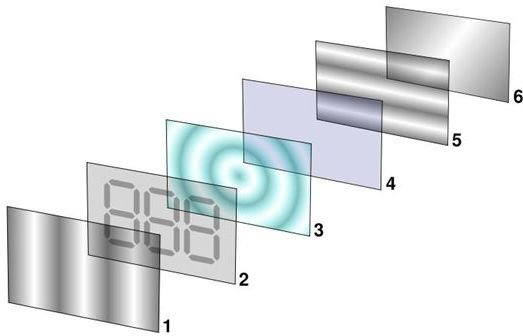How Does LCD TV Work?
How Does LCD TV Work?
Like plasma TVs, LCD TVs have become more and more popular over the last few years, combining a need for lower power requirements and minimal space with high definition pictures and a trend for home theatre.
LCD TVs appear to be highly advanced pieces of hardware, and yet they are rooted in the same principles that made digital calculators ubiquitous in the late 1980s.
Using three main components – a liquid crystal compound, a polarized screen and some sort of backlight, LCD TVs are mass production items that seem to be finding a wider audience as the cost and weight implications of plasma units leads to shoppers choosing a system that offers quality high definition images for a lower price.
So how does LCD TV work?
Liquid Crystals and Electricity
LCD TVs work mainly due to the way in which the liquid crystal is controlled by electricity (via a Thin Film Transistor or TFT) in order to change the direction, colour, intensity (or all three) of light.
Liquid crystals themselves are individual molecules with a cylindrical shape that are found to be twisted in the natural state. This twisted state allows the passage of light – but with the influence of an electrical charge, the molecules will begin to untwist, thus prevent the passage of light (usually from a backlight source). By altering the intensity of the charge, the cylinder molecules can be manipulated, and different shapes, brightness and contrasts created.
(Image from Wikipedia)
Polarized Glass - an LCD Sandwich
For manufacture of an LCD TV, the liquid crystals are held between two polarized glass plates along with two grids of electrodes.
These electrodes are used to control individual pixels in the display, controlling the charge through the LCD. This then allows the display to be altered, with bright tones produced by a low voltage and dark tones produced by an increased voltage.
Without any additional technology, it isn’t possible to produce a dark black tone on LCD TVs due to the small amount of light that passes through liquid crystals in their natural state.
As such, darker tones are created by the polarized glass plates.
Different Types of Backlight
Utilizing a backlight made from one or more fluorescent lamp mounted within the LCD TV unit allows the image to be seen. Colour is added at the pixel stage: each pixel has three elements – red, green and blue – and these are activated by the charge and enhanced by the colour folder.
Using the TFT, individual pixels can be set to whatever state is necessary for the correct image to be displayed. However as explained above, without the addition of further technology, “perfect” black tones cannot be achieved.
As a result of this limitation and to meet the high definition picture requirements of consumers, more and more LCD TVs and monitors are coming equipped with LED backlights. Rather than a row of lamps, LEDs are arranged in a matrix behind the screen. These are then switched on or off as the displayed images dictate, with the off state producing the sort of rich blacks that would be found on the most advanced plasma TVs.
